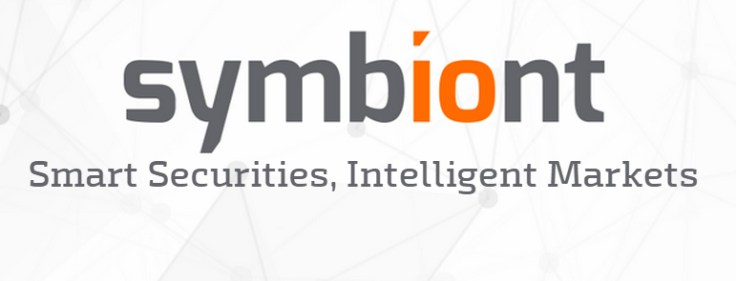Blockchain in capital markets: Symbiont lists opportunities for smart contracts

When you see large groups of incumbents investing in the same vehicle it's a signal to the market of fear and defence rather than innovation, states Mark Smith, CEO of Symbiont, the smart contract engine for banking and finance.
Smith told IBTimes UK: "When you are looking for a group or a quorum to come together to agree on something, that's not innovation. Innovation is when you are out leading the way, trying new things and out of these new things comes interesting solutions that shift the structure of the market. I don't think there is any suggestion from a lot of these market participants that there's a desire to change at the core how capital markets operate."

Smith believes smart contracts are the killer app of blockchains and that the ledger layer will soon be thought of as a commodity; he compared the current hype around distributed ledgers to the buzz that existed around matching engines back in the 1990s when that technology first started to disrupt and disintermediate open outcry.
SmartLoans
Putting Symbiont's smart contracts to good use, the company has announced a deal with Ipreo's loan settlement platform to overhaul antiquated and costly manual processing in the $3 trillion global syndicated loans market.
Settlement periods of 20 business days or more threaten the continued growth of the loan market. For the sell side, the delays tie up precious capital; for the buy side, settlement uncertainty confounds cash management and necessitates costly credit lines. Symbiont is developing "SmartLoans", based on smart contracts for the loan market.
Smith, an expert on capital markets and technology, is joined by a technology team that includes Counterparty creators Adam Krellenstein, Evan Wagner and Robby Dermody. Symbiont has registered the term "smart securities" to describe the automated business logic that it runs on top of distributed ledger technology. Symbiont uses embedded consensus so its smart contracts are Turing complete with state while the ledger it uses also has state. The two separate states means all the nodes need to know is the state of the balance. Symbiont has also constructed a blockchain that uses PBFT (Practical Byzantine Fault Tolerance) consensus protocol in order to "control our own destiny".
Symbiont also recently joined the Linux Foundation's Hyperledger Project, to which a number of companies such as Blockstream and IBM contributed code. Asked if Symbiont would be donating some of its smart contracts code, Smith said: "The answer is no. We will write specific code, but we are not going to contribute code we have already written. Our CTO will be writing code and committing to the Linux Foundation project. We are members specifically so we can guide the development so that it can support smart contracts as well as it supports tokens."
Smith said: "We really see the benefits of shortened settlement time, decreasing friction, decreasing the client costs. All these things changing true market structure are going to happen above the ledger layer; it's going to happen in that business logic layer. That's where smart contracts live, and that's why we are so adamant that the true killer app of all this going to be smart contracts."
Netting
Smith said netting is a good example of something that cannot be solved at a ledger level but rather by business logic that runs on top, adding that Symbiont smart contracts had solved the problem of netting. "We already solved that. We were the other finalist for the ASX [Australia's main stock exchange] opportunity so we have a lot of interesting technology for that and built smart contracts solutions for a lot of problems that exist in traditional equity markets – not necessarily that you could use in the US right away, but that you can use in certain environments.
"Part of that is real time gross settlement; gross settlement versus end of day net settlement, novation, even net settlement against gross settlement in an intra-day timing mismatch. We solved that with smart contracts.
"None of that is solvable with the ledger, which is just a repository of information. The ledger doesn't have a netting function to it; you'd have to build logic above the ledger layer. If you are going to use the ledger natively then it has to be real-time gross settlement for every transaction."
US equities
Real-time settlement is troublesome for US equity market structures because the information about the ultimate beneficial owner is not known. "In the US you have a street name. You have no idea who the ultimate beneficial owner is and due to that issue it makes it almost impossible to do real-time gross settlement on a trade by trade basis, or even on a batched trade basis," said Smith.
"The speed with which trading happens in the US is also with HFT, ledgers are nowhere near optimised to get a hand on that kind of speed, and probably never will."
Smith said distributed ledger technology has an inverse relationship between speed and security: the faster consensus and blocks are created, the less safe the system is. He pointed out that it took years to go from a half a second for matching down to five nanoseconds and that it's going to take a while to optimise ledgers to get those kind of performance metrics.
"This is why I think there will be multiple ledgers that are operating because some of them will be deployed in use cases that have lower liquidity, less velocity and require more sophistication in their structure and security. Other ledgers will be purpose built to try and solve things like US equity issue.
Smith added that moving fromT+3 to T+1 and real time is not a technology problem that requires a blockchain, but rather a problem of will. He said other markets provide a better opportunity, such as corporate debt or like syndicated loans, or like repo, or like private equity or a sundry of contract markets, OTC markets.
Proxy and corporate actions
He said another area Symbiont is interested in is around corporate communications by proxy and corporate actions. "Now those have nothing to do with trading and nothing to do with clearing and settlement, but there are major problems around proxy. It's an antiquated system, it's very expensive, there are a few companies out there that act like monopolies in the proxy world and they generate a massive amount of revenue and they simply maintain very antiquated, high friction process.
"We have already built solutions for proxy where companies can take control of messaging to their shareholders. You can imagine with an immutable ledger how well voting works.
He said the idea of mailing out a thick printed proxy statement that is confusing and which may not reach its destination – and if it does is probably heading for the trash – would be elegantly replaced by a distributed ledger and smart contract.
"If I have information, like a registry does, about who those shareholders are, or how to get information to those shareholders electronically, they can receive a proxy on distributed ledger, and when they open the proxy it sends an immediate transaction message to the ledger that proxy has been delivered. The vote is a smart contract that is created and structured in a way that it is constantly measuring the number of votes against the number of votes necessary in order to pass whatever vote that may be.
"In the event that once the vote passes there's action items that have to be taken, like for example, a change of board members, the smart contract can immediately change those board members, send a message to a state of incorporation changing the board, updating the annual report."
© Copyright IBTimes 2025. All rights reserved.






















